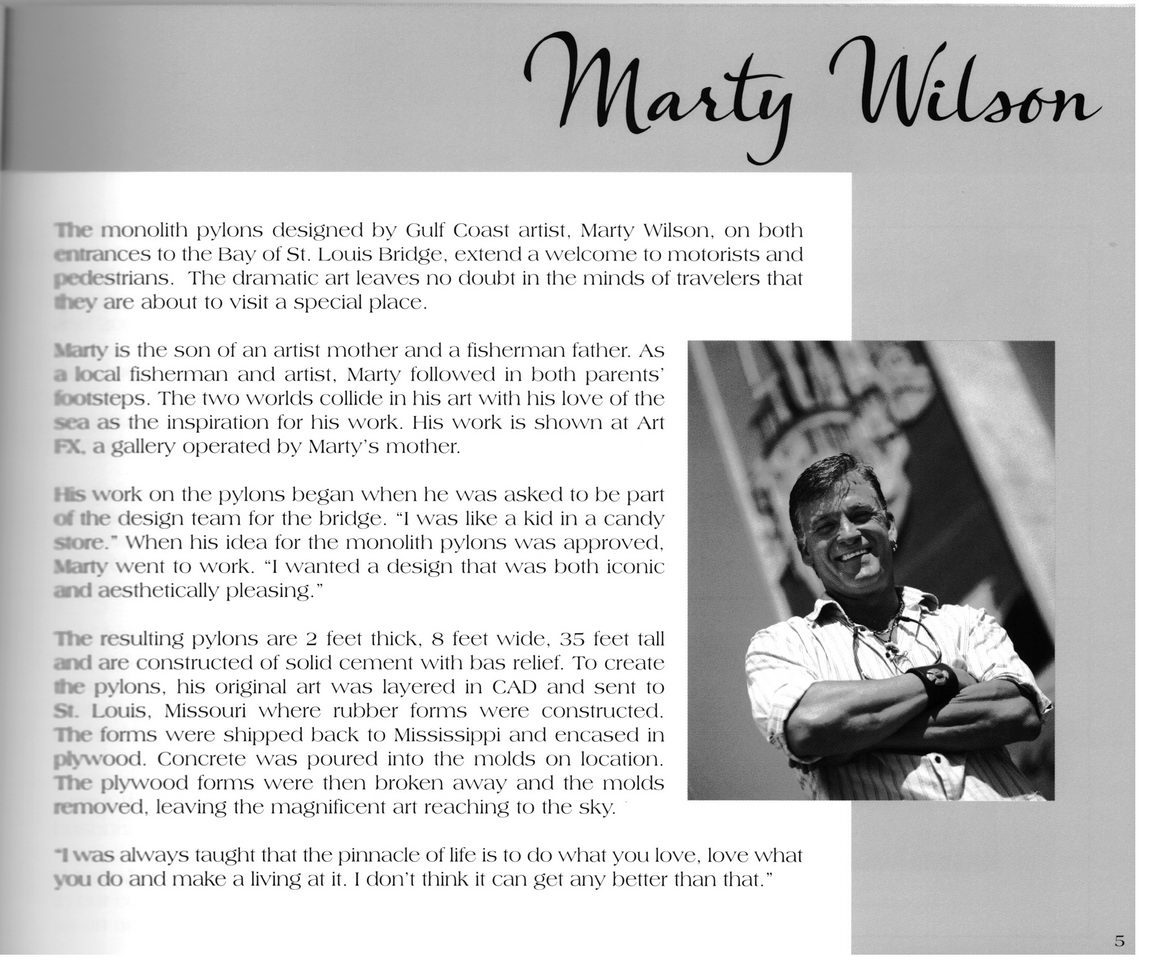This text was obtained via automated optical character recognition.
It has not been edited and may therefore contain several errors.
fiL&frtv monolith pylons designed by Gulf Coast artist, Marty Wilson, on both /nances to the Bay of St. Louis Bridge, extend a welcome to motorists and ,*i;estrians. The dramatic art leaves no doubt in the minds of travelers that "jt-v are tibout to visit a special place. v-1 "y is the son of an artist mother and a fisherman father. As ; >cal fisherman and artist, Marty followed in both parents’ •- ■ >isteps. The two worlds collide in his art with his love of the •^ ■*1 as the inspiration for his work. His work is shown at Art :* N gallery operated by Marty’s mother. : work on the pylons began when he was asked to be part ■: tfie design team for the bridge. “1 was like a kid in a candy << »rr*' When his idea for the monolith pylons was approved, went to work. “1 wanted a design that was both iconic ■j*J aesthetically pleasing.” ;u resulting pylons are 2 feet thick, 8 feet wide, 35 feet tall ici*i are constructed of solid cement with bas relief. To create ft*.- pylons, his original art was layered in CAD and sent to Louis, Missouri where rubber forms were constructed. The forms were shipped back to Mississippi and encased in riymxxl. Concrete was poured into the molds on location. TJiO plywood forms were then broken away and the molds -4? loved, leaving the magnificent art reaching to the sky 'f was always taught that the pinnacle of life is to do what you love, love what . < *: do and make a living at it. 1 don’t think it can get any better than that.”

Bridges The-Art-and-Artists-of-the-Bay-St-Louis-Bridge-07